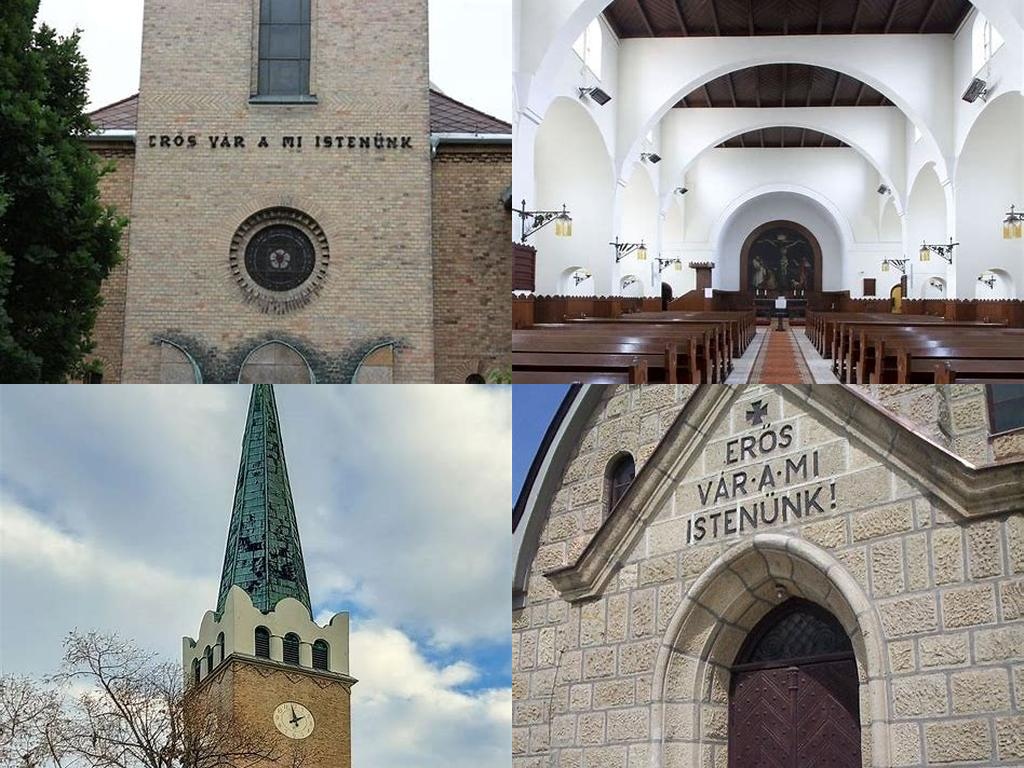
Rákoskeresztúri evangélikus templom sits quietly in the historic heart of Rákoskeresztúr, one of Budapest’s lesser-trodden districts. Unlike the city’s grand basilicas and famous synagogues, this Lutheran church isn’t a stop on the regular tourist track. But if you’re the kind of traveler who relishes an encounter with everyday history and subtle beauty, you’ll find the Rákoskeresztúr Lutheran Church the kind of place that rewards exploration. Its story isn’t only one of bricks and mortar; it’s about a community’s tenacity, faith, and evolving identity set against Hungary’s shifting religious landscape.
Away from the neo-Gothic drama of Pest’s downtown churches, the Rákoskeresztúri evangélikus templom offers something more grounded—and maybe, for that reason, more intimate. The Lutheran congregation of Rákoskeresztúr dates back centuries, but the actual building of the church only began in 1897. The district itself was long a patchwork of agriculture and small-town life on Budapest’s then-periphery, so when the plans for a dedicated Lutheran place of worship took shape, it marked both a spiritual and civic milestone for the local people. Designed and realized by the prominent architect Károly Jäger, the church’s silhouette stands out with its modestly elegant tower, capped with a classic spire—an unmistakable landmark for those who find themselves strolling on Pesti út.
The church is neither vast nor ostentatious, but step through its doors and you’ll appreciate the charming proportions and clever use of light, hallmarks of late 19th-century ecclesiastical architecture in Hungary. The brickwork façade, punctuated by tall windows, radiates a warm simplicity. Inside, white walls and wooden fixtures make the nave feel bright and welcoming. This isn’t a space built to impress with sheer scale; it’s a meeting point, a place shaped by generations of locals who gathered here for weddings, baptisms, funerals, and weekly services. And if you linger for a moment during a quiet afternoon, it’s easy to sense the steady pulse of community life that’s ebbed and flowed here for more than a century.
One particularly interesting feature is the small but beautiful organ, crafted contemporaneously with the church’s founding and restored several times over the years thanks to the devotion of parishioners and local musicians. Music and congregational singing are lynchpins of Lutheran worship tradition, and it’s a treat if you chance upon an organist practicing or hear the interior fill with harmonies during a service. The church is also known locally for its Christmas and Easter events, which gather Rákoskeresztúr’s residents and echo the rhythm of the religious calendar.
The church grounds are modest, but walking around the small garden, you’ll notice memorials and simple headstones—markers of fact and feeling for a community whose story isn’t written in epic battles or royal decrees but in the everyday resilience of faith. Nearby, the streets unfold in a mix of old and new Budapest: tidy houses, local bakeries, and a slowly shifting skyline as the city extends its reach. For those interested in tracing the story of Lutheranism in Hungary, or for visitors who enjoy tracing the quiet seams joining city and suburb, the Rákoskeresztúri evangélikus templom reveals a poignant chapter.
So while it may not make the front pages of the guidebooks, this church, standing since 1897 at the heart of Rákoskeresztúr, is testament to ordinary Hungarian lives quietly interwoven with history. If you find your way to this corner of Budapest, step inside, and you’ll encounter not just architecture, but a living piece of the city’s spiritual and social fabric—one that many visitors never get to see.





